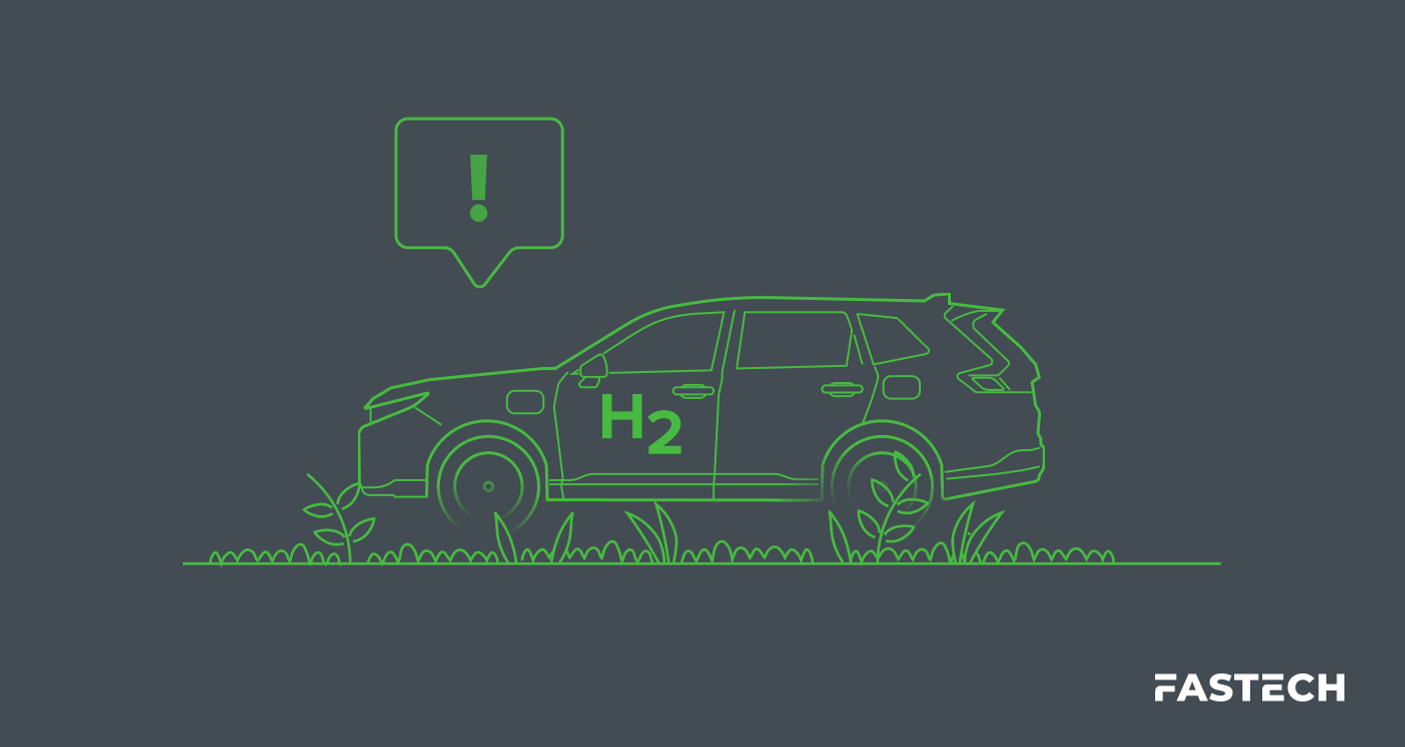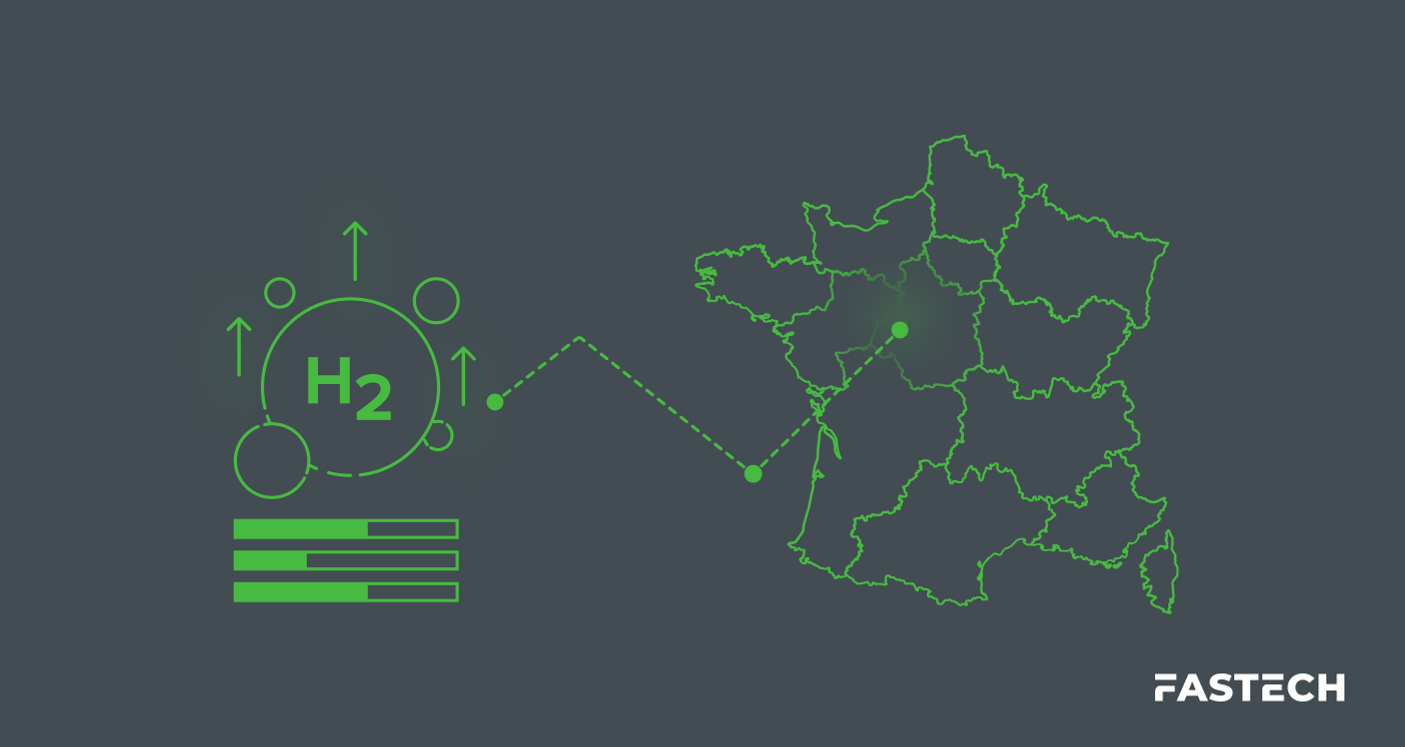Electrolysis for Hydrogen Production: What It Is and How It Works

Electrolysis for hydrogen production is becoming increasingly common, accessible, and affordable. But how does it work, and is it a viable option for 100% green energy manufacturing?
In this guide, we’ll explore everything you need to know about using electrolysis for hydrogen production. We’ll answer a guiding question—“What is electrolysis?”—in detail, explain why the process is used to create hydrogen gas, and whether or not the method is practical for the green energy supply.
What is Electrolysis?
First, let’s break down electrolysis— the process for splitting a substance into its component elements or compounds.
Ions and Bonding
To better understand electrolysis, let’s break down two important chemistry concepts—ions and bonding.
Except for some gasses, most elements don’t exist in their pure form in nature. Instead, their electrons are bonded to other elements to form complex compounds. Water is an example:
2H⁺ + 1O⁻ → H₂O
The formula above shows two hydrogen ions (H⁺) combining with one oxygen ion (O⁻) to form H₂O—the chemical symbol for water.
An ion is an electrically charged particle. Positively charged ions (cations) seek an electron to become electrically neutral, and negatively charged ions (anions) have an extra electron to provide.
These electron exchanges between atoms and compounds are called chemical bonds. There are three different kinds:
- In ionic bonds, one component compound donates an electron to another to create a neutral substance. Ionic bonds can conduct (or allow movement of) an electrical charge. Table salt is an ionically bonded substance—sodium (Na⁺) donates an electron to chloride (Cl⁻) to form NaCl, or sodium chloride.
- In covalent bonds, two or more components share an electron (or multiple, depending on the substance formed) to achieve electric neutrality. Covalent bonds cannot conduct electricity. Water is covalently bonded—an oxygen ion (O⁻) shares electrons with two hydrogen ions (H⁺) to form H2O.
- Metallic bonds are unique—they form between metallic atoms that collect a cloud of numerous electrons that can freely move between the atoms.
Equipment and Electrical Flow
Let’s break down a simple electrolysis equipment setup:
- A beaker is filled with a pure solution, a compound diluted in water, or a compound in its liquid form.
- Two electrodes (solid, stable pieces of material) are placed into the beaker and connected to a power source.
- When activated, the power source charges the electrodes—the positively charged electrode is the anode (because it attracts anions from the solution in the beaker), and the negative electrode is the cathode (because it attracts cations).
The setup creates an electrical current throughout the system. The power source has two wire connectors, one positive and one negative. When it’s turned on, electrons within both electrodes move towards one electrode (the one connected to the positive wire), and the other electrode develops a positive charge (because it’s missing electrons).
As a result, compounds in the solution split into their component ions and move to the electrode, creating a neutral charge.
Electrolysis for Hydrogen Production
To visualize how this system works, let’s explain the electrolysis of water:
- Electrodes (for this example, we’ll assume they’re made of copper) sit in a beaker filled with water, and each electrode is connected to a live power source.
- While the electrodes will develop charges as electrons flow through the power system, water won’t split into its component ions. Since it’s covalently bonded, water doesn't conduct electricity, so you must add an additional ionic substance (called an electrolyte) to the solution to complete the electrolysis process—let’s use sodium hydroxide (NaOH).
- Now that the beaker is filled with H2O and NaOH, three reactions will occur:
- Sodium ions (Na+) will collect at the cathode (the negatively charged electrode).
- Hydroxide ions (OH-) will collect at the anode (since it has a positive charge).
- The presence of charged particles in water (Na+ and OH-) will allow an electrical current to flow in the solution. Hydrogen ions (H+) split from both H2O and the hydroxide ions (OH-), moving to the cathode. Oxygen ions (O-) will gather at the anode.
When hydrogen ions (H⁺) gather at the cathode, they covalently bond to form H₂—hydrogen gas—which can be collected and stored. Oxygen ions (O⁻) behave similarly, forming O₂ gas.
Electrolysis Methods for Hydrogen Production
In the hypothetical above, we used copper electrodes in a basic electrolysis setup. But hydrogen manufacturers use more advanced configurations to increase efficiency or output:
- Polymer Electrolyte Membrane (PEM) Electrolysis – In PEM electrolysis, the electrolyte (the material that induces a current in water) is made from a plastic material. Ions move across the plastic membrane, gathering at their respective electrodes to form hydrogen and oxygen gasses.
- Alkaline Electrolyzers – Alkaline electrolyzers add an alkaline (basic), ionic solution or solid to the water in the beaker to induce an electrical current. The hypothetical we described above, using NaOH to facilitate an electrical charge in water, is one example of this method.
- Solid Oxide Electrolyzers – Solid oxide electrolyzers use a ceramic solid to induce an electrical current in steam—H₂O in gas form—instead of liquid water. Since it requires steam, this process also demands high-temperature conditions.
But if alkaline electrolysis works, why do scientists continue to develop new methods for manufacturing hydrogen gas? In order to make hydrogen production (and widespread adoption as a fuel) viable, the production process must:
- Be cost-effective
- Use readily available, inexpensive materials
- Require less energy than it generates
While current methods show promise, innovators continue to study and create ways to achieve the criteria above.
Is Electrolysis a Viable Method for Hydrogen Production?
Right now, a major problem facing electrolysis for hydrogen production is scale. The world’s hydrogen production operation (especially via electrolysis) is significantly less robust than its fossil fuel manufacturing efforts.
And, scale is crucial for viability as a green energy option:
- Until hydrogen production matches or eclipses fossil production, supplies won’t be high enough to completely replace traditional fuel with hydrogen gas.
- Low supply leads to low rates of adoption—and, to decarbonize, the world needs widespread implementation of alternative energy solutions.
- Arguably most important, both low supply and low adoption increase the cost of production. Manufacturing enough hydrogen gas to fuel the entire world is significantly more efficient than creating just enough for a special interest group.
Why Create Hydrogen via Electrolysis?
So, why is electrolysis the current method of choice for hydrogen production?
- Accessibility – Electrolysis materials (electrodes, power sources, electrolytes, and water) are readily available for scientific and industrial use.
- Energy efficiency – Although it requires energy, the process is generally energy-efficient—and, under the right manufacturing conditions, it could be more efficient at scale than traditional fuel production.
- Green potential – Electrolysis shows significant promise for 100% clean energy production. But it would have to be:
- Performed using renewable power sources, like solar, wind, hydroelectric and geothermal.
- Transported using renewables and energy-efficient vehicles
- Manufactured, transported, and implemented at scale
- Transported using renewables and energy-efficient vehicles
- Manufactured, transported, and implemented at scale
And, hydrogen fueling is already growing in popularity. Widespread adoption isn’t a reality yet, but:
- The Japanese government is exploring and implementing hydrogen fuelling for electricity production, transportation, industrial applications and refinery operations.
- Both Toyota and Hyundai released commuter fuel cell electric vehicles (FCEVs) powered by hydrogen in 2022.
- Hydrogen fuelling stations for commuter vehicles are expanding in Hawaii and the Western continental US.
Embrace the Future of Hydrogen Gas With FASTECH
Electrolysis for hydrogen production shows significant promise for the future of green energy. As the world continues to decarbonize, hydrogen gas will become even more viable to the world’s power supply—just like other renewables.
If you’re ready to embrace the future of alternative fueling, it’s time to consult with the experts who can make your vision a reality. At FASTECH, we’re leveraging our design, construction, and procurement expertise to create turnkey fueling stations for green energy leaders across the US.
After 20 years in the conventional fuel industry, we have the experience you need to build functional, efficient, and successful fueling stations. We can’t wait to help introduce renewable fueling to your community.




